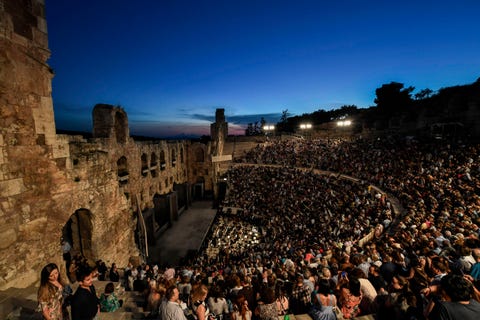Surprising audio: They reconstruct the oldest scores and they sounded like that …
Music in ancient Greece was constant. As can be seen from other artistic categories, in writings or paintings, musical instruments were often present and played as entertainment or to be accompanied by dances. And although we know which instruments were more common (the liras and the aulos or double oboes for example) or the notes and the scales that they used for the compositions, it has never really been given to the sound of the music they played and they listened in the Greek polis. This is because the indications for the musical interpretation that they left in writing are complicated and unknown, which makes the current reproductions strange and unattractive.
The situation has changed greatly thanks to a project that has been developed since 2013 to investigate ancient Greek music and that has made very interesting advances.
The central theme of the old song was its rhythm, but since mechanical chronometers that defined a fixed rhythm did not exist at that time, it is often not clear whether they should be sung and played fast or slow. Setting an appropriate tempo is essential for music to sound good, so when playing music of this type, it is strictly based on the duration of the syllables of the words, similar to the metrics of the poetry.
Thousands of words have been recovered on the theory of melody and the harmony of the writings of ancient authors such as Plato, Aristotle or Ptolemy. Many documents with ancient notation in papyrus or stone have come to light intermittently since the sixteenth century. Gathered, transcribed and interpreted carefully, they give us a better opportunity to understand how music sounded.

ARIS MESSINIS Getty Images
The first substantial musical document, found in 1892, preserves part of a chorus of Euripides’ Orestes, from 408 BC. For a long time he has raised problems of interpretation, mainly due to his use of quarter-tone intervals. Western music operates with integer tones and semitones; any smaller interval sounds in our ears as if a note was playing out of tune.
But new analyzes of the Orestes fragment, published earlier this year, led to surprising ideas. First, it was shown that the elements of the score imitate the meaning of the words with the melody thanks to the fact that they found a decreasing rate when the word “lamento” was sung and a large jump of ascending interval that accompanies the word “jumps upwards”. “
With these premises in view, in 2016 at the Ashmolean Museum, Oxford we could hear the music of the Orestes coral papyrus with the accompaniment of aulos, establishing a fast pace, almost like being in Greece in 400 BC
It is often said that the western tradition of classical music begins with the Gregorian chant of the ninth century. But the reconstruction and understanding of ancient Greek music have shown that this must be recognized as the root of the European musical tradition.
